Welcome to the fascinating world of learning curves, where common sense takes a vacation and data tells the real story. If you’re a teacher, trainer, or HR manager trying to measure how quickly your learners are actually getting better at something, you’ve stumbled onto the right article.
A steep learning curve indicates rapid improvement with minimal effort. It’s the shallow curves you need to worry about. Those are the real killers, where you put in hours of practice and barely move the needle on performance.
- What Exactly Is a Learning Curve?
- Why Online Assessment Is Your Secret Weapon?
- OnlineExamMaker – Best AI Learning Curve Assessment Making Tool for Educators
- Types of Online Assessments That Capture the Learning Journey
- Designing Assessments That Reveal Learning Curves
- How to Create Your Learning Curve Assessment in OnlineExamMaker?
- Optimization Strategies That Actually Work
- Common Mistakes When Measuring Learning Curves
What Exactly Is a Learning Curve?
Let’s clear this up right from the start. A learning curve isn’t just corporate speak for “this will be hard.” It’s a visual representation of how performance improves over time as someone gains experience. Think of it as a graph that tells the story of someone’s journey from bumbling beginner to competent professional.
The basic principle? Performance increases at a decreasing rate. Translation: you make huge leaps in the beginning, then those improvements start to taper off as you get better. It’s why your first thousand practice dives make you dramatically better, but dives two thousand through three thousand only polish the edges.
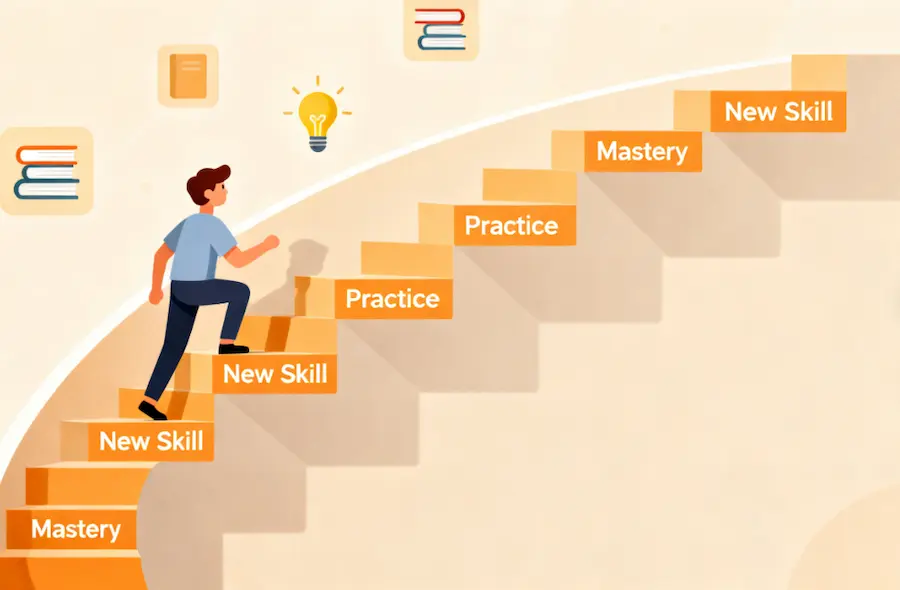
The Anatomy of Progress
Image you’re learning to make espresso. Your first attempt tastes like burnt rubber mixed with regret. By attempt ten, you’ve figured out the basics – grind size, tamping pressure, timing. By attempt fifty, you’re consistently pulling decent shots. By attempt five hundred? You’re making microscopic adjustments to water temperature based on ambient humidity.
That’s the learning curve in action. The curve represents three critical things:
- Speed of skill acquisition: How quickly you’re picking things up?
- Retention: Whether those skills actually stick in your brain?
- Transfer to new tasks: Can you apply what you’ve learned to related challenges?
Why Online Assessment Is Your Secret Weapon?
Now, here’s where things get interesting. Traditionally, measuring learning curves was a messy affair involving clipboards, stopwatches, and someone with the patience of a saint tracking every single mistake. Not exactly scalable when you’ve got hundreds of learners.
Enter online assessments – the Swiss Army knife of learning measurement. They’re not just about testing knowledge; they’re about capturing the entire arc of someone’s development with surgical precision.
Think about it: every click, every answer, every second of hesitation gets recorded. You’re not just seeing whether someone passed or failed; you’re watching their learning curve unfold in real-time. It’s like having X-ray vision into the learning process.
Why online assessments work for measuring learning curves:
- Scalable across hundreds or thousands of learners simultaneously
- Time-stamped data that reveals patterns you’d never spot manually
- Immediate feedback that accelerates the learning process
- Trend analysis that shows whether interventions actually work
OnlineExamMaker – Best AI Learning Curve Assessment Making Tool for Educators
Are you looking for learning curve assessment tools for your training? OnlineExamMaker uses artificial intelligence to help exam organizers to create, manage, and analyze exams or tests automatically. Apart from AI features, OnlineExamMaker advanced security features such as full-screen lockdown browser, online webcam proctoring, and face ID recognition.
Take a product tour of OnlineExamMaker:
● Includes a safe exam browser (lockdown mode), webcam and screen recording, live monitoring, and chat oversight to prevent cheating.
● AI Exam Grader for efficiently grading quizzes and assignments, offering inline comments, automatic scoring, and “fudge points” for manual adjustments.
● Embed quizzes on websites, blogs, or share via email, social media (Facebook, Twitter), or direct links.
● Handles large-scale testing (thousands of exams/semester) without internet dependency, backed by cloud infrastructure.
Create Your Next Quiz/Exam with OnlineExamMaker
Decoding the Shape of Learning
Not all learning curves look the same. Some shoot up like a rocket, others crawl along like a reluctant teenager heading to chores. Understanding these shapes helps you know whether your training program is working or just burning everyone’s time.
Common Learning Curve Patterns
| Curve Type | What It Looks Like | What It Means |
|---|---|---|
| Steep Initial Rise | Rapid improvement at the start, then leveling off | Learners are picking up basics quickly – good instructional design |
| Plateau Phase | Flat section where performance stalls | Learners need new challenges or different approaches to break through |
| Shallow Curve | Gradual, slow improvement over long periods | Complex skills or ineffective training methods – needs investigation |
| Stepped Pattern | Sudden jumps in performance with flat sections between | “Aha moments” where concepts suddenly click into place |

Key Metrics That Actually Matter
When you’re measuring learning curves through online assessment, don’t just obsess over pass/fail rates. That’s like judging a restaurant solely by whether the food is edible. You need richer data:
- Time-to-competence: How long does it take learners to reach minimum acceptable performance?
- Error rate over trials: Are mistakes decreasing with each attempt?
- Completion time: Are learners getting faster while maintaining accuracy?
- Accuracy growth: Is precision improving alongside speed?
- Mastery thresholds: Who’s hitting expert-level performance and who’s stuck?
Types of Online Assessments That Capture the Learning Journey
Not all assessments are created equal when it comes to tracking learning curves. Some are like taking snapshots with a disposable camera, while others are like filming in 4K with slow-motion capability. Here’s your toolkit:
1. Frequent Low-Stakes Quizzes
Think of these as the fitness tracker of learning – constant, gentle measurement that reveals patterns over time. Weekly five-question quizzes tell you infinitely more about learning trajectory than one massive final exam. They chart those short-interval gains and catch problems before they become disasters.
2. Adaptive Assessments
These are the smart thermostats of testing. They adjust difficulty based on how the learner is performing, always keeping them in that sweet spot between “too easy” and “impossibly hard.” Adaptive assessments are brilliant for revealing true learning curves because they continuously challenge learners at their current level.
3. Simulations and Scenario-Based Tasks
Want to know if someone can actually do the thing, not just regurgitate facts about the thing? Simulations put learners in realistic situations and measure how they perform under conditions that mirror actual work. It’s the difference between memorizing recipes and actually cooking a meal.
4. Timed Performance Tasks
Speed matters in the real world. Can your customer service reps handle inquiries quickly? Can your nurses calculate medication dosages without pulling out a calculator and squinting at it for five minutes? Timed tasks measure fluency and automaticity – that magical state where skills become second nature.
Designing Assessments That Reveal Learning Curves
Creating assessments that actually measure learning progression isn’t rocket science, but it does require thinking like a detective instead of a judge. You’re not just determining guilt or innocence; you’re gathering evidence about how learning unfolds.
Alignment with Micro-Competencies
Here’s a mistake I see constantly: assessments that try to measure everything at once, resulting in scores that tell you nothing useful. Instead, break skills down into micro-competencies – tiny, specific abilities that build toward mastery.
For example, don’t just test “customer service skills.” Test: greeting protocols, active listening, problem diagnosis, solution offering, de-escalation techniques, and follow-up procedures separately. Now you can see exactly where someone’s learning curve is steep and where it’s dragging.
Progressive Difficulty and Smart Pacing
Remember video games? They don’t throw you at the final boss on level one. They gradually increase difficulty as you develop skills. Your assessments should work the same way.
Mastery learning approaches require demonstrated competence before allowing advancement. No moving forward until you’ve actually learned the current material. It sounds strict, but it prevents that horrible situation where learners stumble through advanced content because they never really learned the basics.
Spaced repetition – testing the same skills at increasing intervals – reveals whether learning actually stuck or whether learners just memorized answers long enough to pass a test. It’s the difference between learning and temporary cramming.
Real-Time vs. Periodic Feedback
Should you give feedback immediately after each question, or wait until the end? The answer is: it depends on what you’re measuring.
Immediate feedback works beautifully for accelerating learning curves. Learners correct course quickly, reinforcing correct approaches and abandoning wrong ones. It’s like having a driving instructor who gently redirects you before you drive into a mailbox.
Periodic feedback better reveals true learning because learners can’t adjust mid-assessment. It’s more like a driving test where you only find out afterward whether you passed. This approach helps with long-range trend analysis – you see whether learners can maintain performance without constant correction.
How to Create Your Learning Curve Assessment in OnlineExamMaker?
OnlineExamMaker is assessment software designed for actual humans who have better things to do than wrestle with complicated interfaces. Please read the step-by-step guide below to get started.
Create Your Next Quiz/Exam with OnlineExamMaker
Step 1: Create Your Question Bank
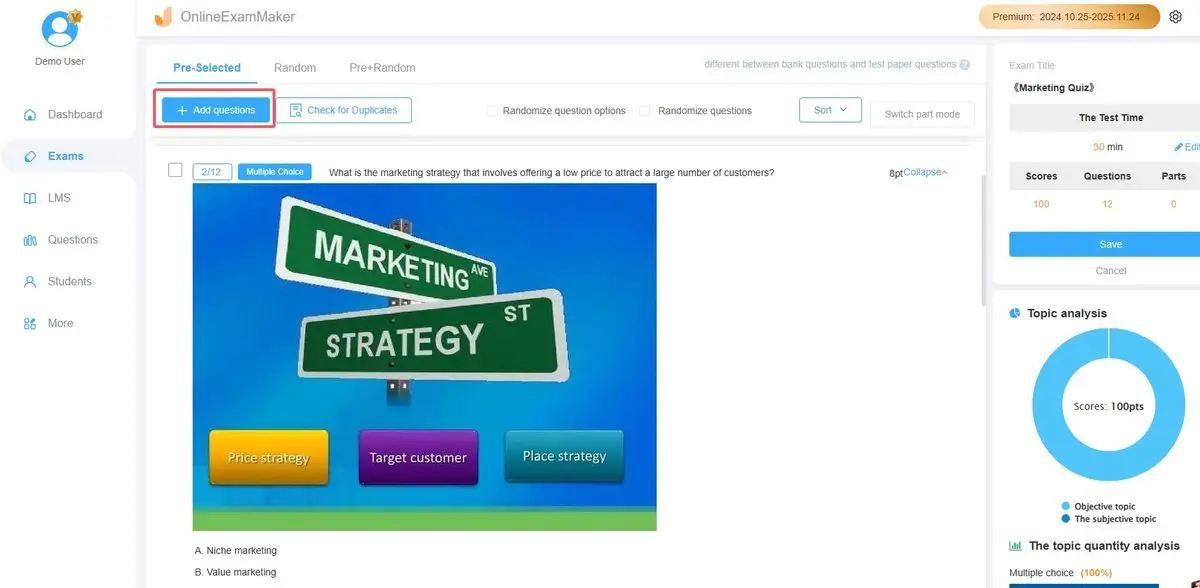
Start by building a comprehensive question bank organized by skill level and competency. OnlineExamMaker lets you tag questions by difficulty, topic, and skill area. This matters because you’ll be pulling from this bank multiple times to create progressive assessments.
Include a mix of question types – multiple choice for foundational knowledge, scenario-based questions for application, and performance tasks for skill demonstration. Variety isn’t just the spice of life; it’s how you capture different dimensions of the learning curve.
Step 2: Set Up Progressive Assessments

Don’t create just one assessment. Create a series that increases in complexity. OnlineExamMaker’s scheduling features let you release these assessments at strategic intervals – say, week 1, week 3, week 6, and week 10 of your training program.
Each assessment should include some repeated questions from previous tests (to measure retention) plus new, more challenging items (to measure growth). This gives you both stability and progression data.
Step 3: Enable Detailed Analytics
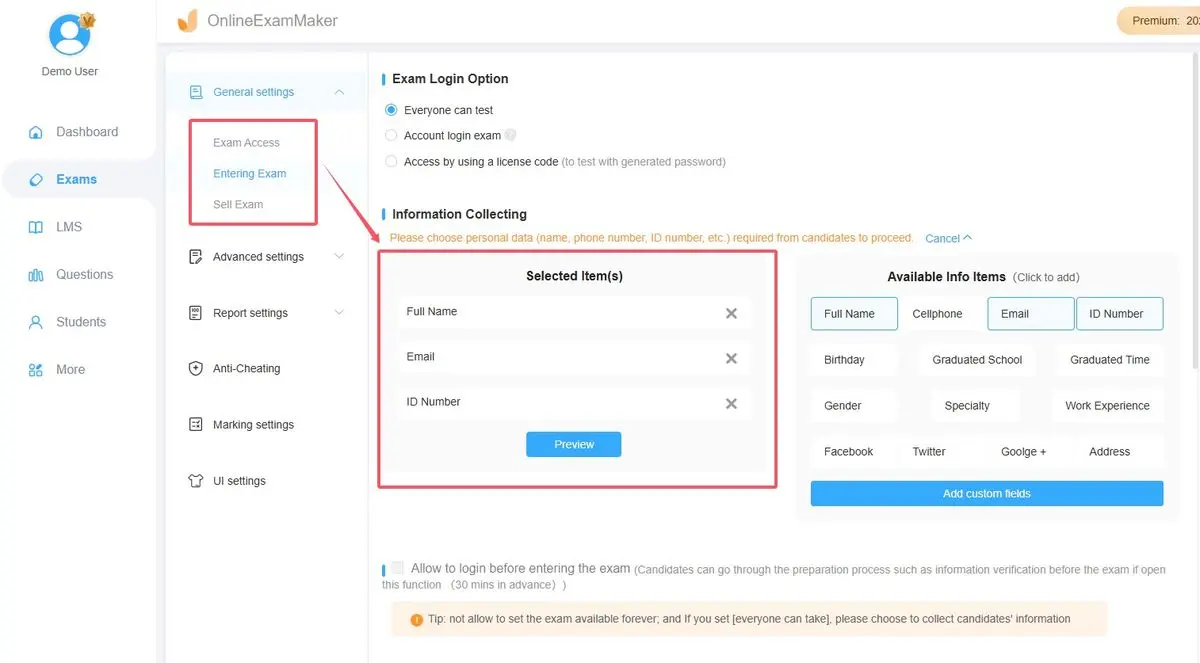
This is where OnlineExamMaker shines. Turn on granular tracking that captures not just whether answers are correct, but also:
- Time spent per question
- Number of attempts (if you allow retakes)
- Pattern of errors across similar question types
- Performance trends across multiple assessment instances
Step 4: Analyze and Act on the Data
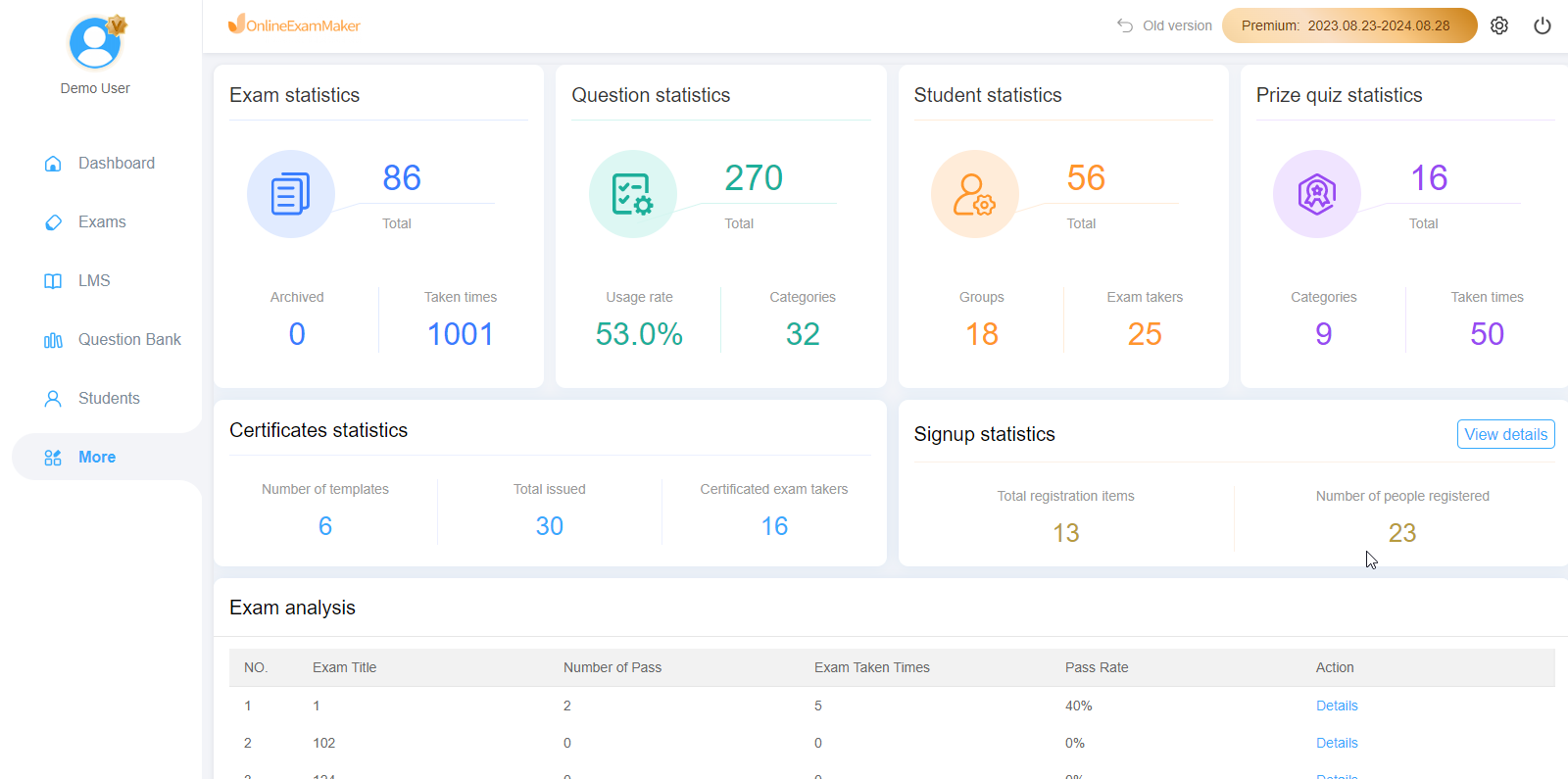
OnlineExamMaker generates visual reports showing individual and group learning curves. You’ll see who’s progressing rapidly (steep curve), who’s plateaued (flat curve), and who’s actually declining (which, yes, sometimes happens when initial memorization fades).
Use these insights to intervene strategically. Learners with shallow curves might need additional resources, different instructional methods, or one-on-one coaching. Those showing steep curves might be ready for advanced challenges or could mentor struggling peers.
Optimization Strategies That Actually Work
Measuring learning curves is pointless if you don’t use the data to improve outcomes. Here’s how to optimize based on what the curves reveal:
For Steep Curves (Rapid Learning)
- Accelerate these learners through content – don’t bore them with repetition
- Offer advanced challenges or leadership opportunities
- Document what’s working and replicate it for other learners
For Shallow Curves (Slow Progress)
- Investigate obstacles: unclear instructions, prerequisite gaps, or inappropriate difficulty
- Provide additional support resources or alternative learning modalities
- Consider whether the skill genuinely requires this much time to develop
For Plateau Phases
- Introduce novelty – new contexts, applications, or challenges
- Provide advanced feedback that highlights subtle areas for improvement
- Sometimes plateaus are normal consolidation periods; don’t panic immediately
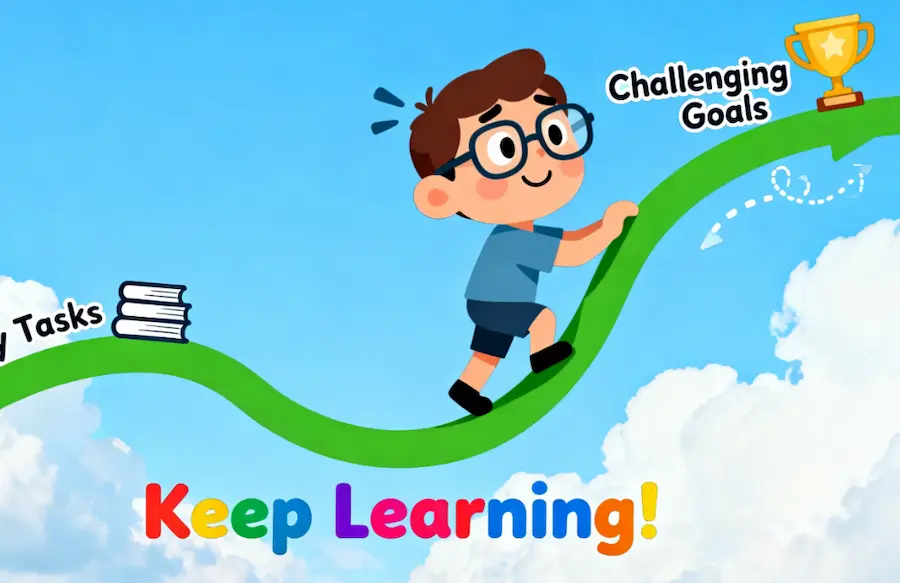
Common Mistakes When Measuring Learning Curves
Let’s talk about what not to do, because honestly, these mistakes are everywhere:
Mistake 1: Testing Only at the End
One final exam tells you nothing about the learning curve. It’s a single data point, not a curve. You need multiple measurements across time to see the trajectory.
Mistake 2: Confusing Speed with Quality
Just because someone completes assessments quickly doesn’t mean they’re learning well. They might be rushing through, sacrificing accuracy for speed. Always measure both dimensions.
Mistake 3: Ignoring the Context
Learning curves vary dramatically by domain. Programming might show a shallow curve (it’s complex), while basic data entry might show a steep curve (it’s repetitive and straightforward). Don’t compare apples to oranges.
Mistake 4: Assuming the Curve Predicts Individual Outcomes
Learning curves show general patterns, not guarantees. Some individuals will always deviate from the average. That’s not a failure; it’s humanity being human.
The Real-World Impact of Learning Curve Measurement
Here’s why this matters beyond abstract theory: organizations that effectively measure and respond to learning curves save massive amounts of time and money. They don’t waste resources training people in skills they’ve already mastered. They don’t advance learners before they’re ready, setting them up for failure and frustration.
In healthcare settings, understanding surgical learning curves literally saves lives. Hospitals know that surgeons performing their first fifty procedures of a new technique need additional oversight. Mail delivery services optimize routes by understanding how carriers’ efficiency improves with experience. Railway companies reduce accidents by tracking how safety performance evolves over time.
The principle scales down too. That team member who keeps making the same mistakes? Maybe they’re stuck in a plateau and need a different approach. The new hire who’s acing everything? Perhaps they’re ready for more responsibility than you’re giving them.
Remember: a steep learning curve is actually a good thing. It means rapid improvement with reasonable effort. It’s those shallow curves – where people practice forever with minimal gains – that should worry you. Now go measure some curves and see what they’re trying to tell you about your training programs.